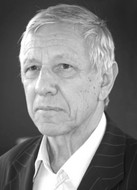Anaerobic practices to build up oxidizing capacity in core muscle groups
Фотографии:
ˑ:
Dr.Hab., Professor G.A. Gilev1, 3
V.N. Gladkov2
Postgraduate student V.V. Vladykina1
Associate Professor А.А. Pleshakov3
1Moscow Pedagogical State University, Moscow
2Centre of innovative sports technology and sports training of national teams, Sport and Tourism Department, Moscow
3Moscow Polytechnic University, Moscow
The study analyzes benefits of an efficient training workload management model for elite cyclic sports on the whole and swimming sport in particular. Applied for the study purposes were the physiology and biochemistry test methods (including HR and blood lactate tests), chronometry and standard mathematical statistics methods. Subject to the 4.5-month-long educational experiment were 28 elite 50/100/200/400m swimmers evenly split up into Experimental (EG) and Reference (RG) groups. The study demonstrates benefits of the combined anaerobic/ aerobic training model with the growing intensity in the aerobic zone close to the anaerobic threshold. The performance growth on the distances claiming mostly the glycolythic energy supply with the insignificant blood lactate variations in the EG were interpreted as indicative of the extra lactate consumption mechanisms being switched on to build up the oxidizing capacity in the core muscle groups.
Keywords: swimmers, anaerobic and aerobic loads, athletic performance, oxidizing capacity, energy supply for muscle contraction.
References
- Gabrys T. Anaerobnaya rabotosposobnost sportsmenov: limitiruyuschie faktory, testy i kriterii, sredstva i metody trenirovki. Avtoref. dis. dokt. ped. nauk [Anaerobic performance of athletes: limiting factors, tests and criteria, training means and methods. Doctoral diss. abstract (Hab]. Moscow, 2000, 57 p.
- Gilev G.A., Maksimov N.E. Ispolzovanie sochetaniy uprazhneniy razlichnoy intensivnosti v trenirovochnom protsesse plovtsov [Use of different-intensity exercise sets in the training process of swimmers]. Vestnik sportivnoy nauki, 2011, no. 2, pp. 12-15.
- Gilev G.A., Babinina T.A., Udilova I.V. Povyshenie utilizatsii laktata pri vypolnenii uprazhneniy glikoliticheskoy napravlennosti [Increase of lactate utilization during glycolytic exercises]. Mir nauki i innovatsiy, no. 2 (2), vol. 12, Ivanovo: Nauchny mir publ., 2015, pp. 60-63.
- Gladkov V.N. Nekotorye osobennosti zabolevaniy, travm, perenapryazheniy i ikh profilaktika v sporte vysshikh dostizheniy [Some features of diseases, injuries, overstrain and their prevention in the sport of higher achievements]. Moscow: Sovetskiy sport publ., 2007, 152 p.
- Markov G.V., Gladkov V.N. Kompleksnaya sistema vosstanovleniya sportsmenov v razlichnykh vidakh sporta [Integrated rehabilitation system for athletes in various sports]. Moscow: MCDPCS publ., 2005, 39 p.
- Platonov V.N. Plavanie. Uchebnik [Swimming. Textbook]. Kiev: Olimpiyskaya literatura publ., 2000, 496 p.
- Shirkovets E.A. Sistema operativnogo upravleniya i korrektiruyuschee vozdeystvie pri trenirovke v tsiklicheskikh vidakh sporta. Avtoref. dis. dokt. ped. nauk [system of operational control and corrective actions in training in cyclic sports. Doctoral diss. abstract (Hab.)]. Moscow, 1995, 49 p.



 Журнал "THEORY AND PRACTICE
Журнал "THEORY AND PRACTICE